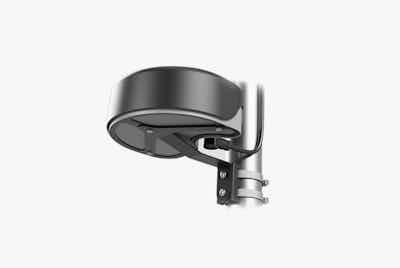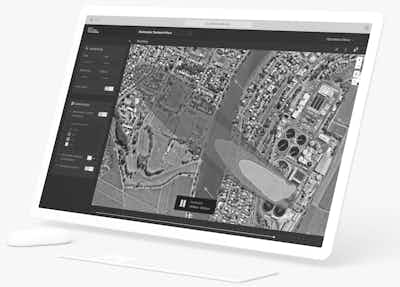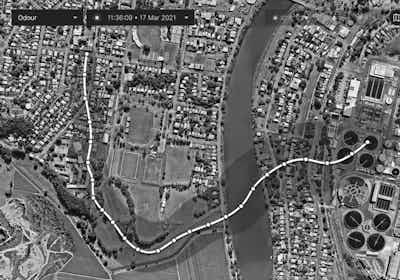While some less potent and concentrated odours can be easily masked with air fresheners and sprays, these approaches are not effective for controlling odour pollution, which is a far more complex and large-scale problem that can be exacerbated by specific weather conditions such as low winds.
In 2020, the global water and wastewater market was valued at US263.07 billion dollars. But it’s becoming more difficult for many plant operators to balance necessary operational activities with the need to minimise community impact.
When this balance is achieved, the majority of today's growing populations who rely on wastewater treatment – but don’t want to be impacted by odour – stand to benefit. It also enables treatment plants to stay in the community’s good books and get the job done with fewer costly and time-consuming disruptions.
The need for effective odour management with growing communities
While odour management methods can be complex to implement, operators in urban communities will agree it’s absolutely essential. Over the last few decades, public expectations for odour management have grown, which has led to an increase in complaints and reputational damage for perceived offenders.
Unlike many other risks wastewater treatment plants need to manage daily – like those that come with operating machinery or working with septic tanks – odour is invisible and perception can vary between individuals. Where one person may find a certain odour offensive, another may barely notice it at all. These are a few reasons why it’s often difficult and expensive to measure.
But while you can’t see odour, issues can quickly become serious problems in nearby communities. When wastewater treatment plants don’t have up-to-date data and effective technology for swiftly pinpointing and resolving issues, even before they happen in some cases, chronic problems can develop.
It’s always better to avoid chronic odour problems by having a plan to mitigate unfolding emissions before they become bigger problem. At best they can put a strain on stakeholder relationships and at worst long-term exposure to high-strength odours may negatively impact human health, causing nausea, headaches and respiratory problems.
Staying clear of this means continuously monitoring odour in neighbouring areas with real-time, accurate information. However, this isn’t necessarily easy when you consider the complex nature of the problem. It can also be difficult for non-subject matter experts to make operational decisions based on complex environmental data. Many variables that influence the odorous emissions at your sites are constantly changing, like unforeseen changes in weather conditions.
This is where environmental intelligence and user-friendly odour management software becomes all the more beneficial for wastewater treatment plants that want a simple but effective solution.
What does proactive odour management involve?
Modern odour management involves the use of advanced software, which may use reverse trajectory meteorological modelling.
Reverse trajectory modelling starts at the site of the odour complaint. Technology is then used to work backwards and pinpoint the root of the issue. This process is complex and requires the use of algorithms and real-time, accurate data. However, operators are able to understand if a certain area of their plant is the culprit or if they didn’t cause it. Many wastewater treatment plants have been blamed for naturally occurring events in the past.
Another key aspect of odour management is measuring the impact and extent of likely odour issues before they happen. The ideal outcome is mitigating problems before they come to fruition, which environmental intelligence gives you the ability to do. This is done through model weather and ground level odour measurements.
While the obvious benefits of effective odour management include improved community relations, reduced investigation times and efficient complaint resolution – operators at wastewater treatment plants often find there’s a lot more to be satisfied with.
When making a decision about odour management software, a key question is whether this investment will be a financially justifiable one. Many people find the answer is yes, due to reduced plant operating costs, improved systems, and avoided degradation to asset health.

Reverse trajectory modelling of an odour complaint with EVS Omnis.
How odour management has changed
The rapid evolution of technology has impacted many aspects of our lives – from how we work, shop and communicate to how we travel and plan for the future.
In the past two years alone, 90% of the world’s data was generated. If that’s an indication of anything, it’s that the use of technology is becoming more and more common in our day-to-day lives.
Odour management is no exception to this. Over time, the way we collect data, monitor and respond to odour in our communities has moved forward in leaps and bounds.
Advanced technology and specialised software are behind these developments. It has made a once notoriously complex process far more accessible and practical to operators and non-subject matter experts at wastewater treatment plants. Odour management doesn’t need to cause headaches at your facility.
But what has changed exactly, and how did we get here?
1. Growing communities encroaching on wastewater treatment plants has meant that use of EI technology is critical to pinpoint and resolve odour complaints
As towns and cities continue to expand, many are getting closer and closer to wastewater treatment plants once built on their outskirts. In some cases they have moved within buffer distances around the plants, which were initially designed for improved odour control.
While buffer distances were once an effective option for managing odour, as time has gone on and populations have grown, they have become less viable and can no longer deliver the level of odour control the community is happy with.
This challenge has added another layer of complexity to what was already a difficult task for wastewater treatment plants.
Population growth isn’t showing signs of slowing down. While in 2017 Australia’s population was just 24.6 million, by 2066 it’s expected to reach between 37.4 and 49.2 million people. As this happens, efficient approaches for managing odour are only going to become more widespread and essential in urban centres.
In recent years though, environmental intelligence has emerged as a practical new age technique for better predicting, pinpointing and resolving odour pollution in nearby communities – without holding up operations at the plant.
2. Real-time continuous odour monitoring systems collect data to understand areas of high risk
Odour monitoring technology has made it so operators at wastewater treatment plants can not only access information that’s more detailed and accurate, but also view real-time data at the click of a button.
Variables that influence odour – like the weather – are always changing. To make the most suitable decisions for your wastewater treatment plant, you need access to relevant data that’s reflective of current circumstances. Without this, you could be spending time, money and resources on efforts that are misdirected and ineffective.
Another advantage of this is your ability to proactively identify specific risks that could cause odour pollution problems down the line. When it comes to planning and developing strategies for future managing odour, this is invaluable. You not only have a strong plan, but also the data to back it up.
Real-time data also means if there’s an odour complaint from the public, you have all the information you need to get to the root of the problem right then and there. This makes for drastically lower investigation times, quicker resolutions and better community relationships. With all of that in mind, it also means you can uphold a good company reputation.
3. eNoses (electronic noses) are now an established trend
Mimicking the response of the human nose, the electronic nose is based on an array of gas sensors combined with pattern recognition algorithms. Over time the eNose has evolved, now providing detailed information on the real-time fluctuations of the odour concentrations of a source. These provide indicative measurements of odour intensity on a scale of 1-4.

Envirosuite's 'eNose Ambient' can collect real-time data to feed directly into odour monitoring software at wastewater treatment plants.
4. Combining real-time odour intensity data with local weather forecasts for real time risk analysis at operations
Operators can now visualise odour intensity data from e-Nose and odour monitoring systems in parallel with local weather data to identify unfolding issues at your site.
Envirosuite’s odour management software uses model weather and ground level odour measurements to inform operations up to 72-hours in advance. This paired with real-time data gives teams the means to not only determine when it’s best to complete certain work, but also stay informed on changing conditions that could cause issues or lead to a potential breach or disruption to operations.
5. Maintenance activities can be strategically planned to minimise impact
Maintenance activities at wastewater treatment facilities are one of the biggest culprits for odour pollution. While they are necessary to implement, more odour often leads to more complaints from nearby communities.
Even when maintenance is methodically planned and carried out in a controlled way, sudden changes in weather can still cause problems for those who live and work in surrounding areas.
But now, companies have the upper hand when planning essential maintenance works for minimum disruption. With help from environmental intelligence, they can schedule maintenance activities when the risk of odour emissions travelling into and impacting neighbouring communities is at its lowest.
Wastewater treatment plants that fail to adapt and leverage the opportunities brought by modern technology – such as odour management software – risk stunting their operational growth. An incident that’s nothing more than a small hurdle with the right technology could become a significant roadblock if poorly managed or left for a prolonged amount of time.

Predictive emissions modelling using local weather forecasts with EVS Omnis.
Envirosuite’s proactive odour management software
Envirosuite’s odour management software is designed to be user-friendly and practical, while still offering unrivalled scientific and technological excellence.
You can benefit from advanced odour management systems at your wastewater treatment plant by:
Pinpointing problematic odour and H2S emission events with real-time data that’s easy to read and understand.
Avoiding odour emissions leaving your site’s boundaries by completing maintenance activates in optimum weather conditions.
Implementing reverse trajectory modelling to quickly and accurately diagnose the source of odour complaints.
Refuting responsibility for odour complaints with defensible data.
Receiving early warnings of incidents that could exceed odour thresholds or odour compliance requirements by setting alerts ahead of time. This gives you the ability to make operational adjustments and avoid breaches.
Visualising odour intensity data, which provides indicative odour measurements on a scale of one to four.
Designed for rapid deployment, our monitoring and forecasting solutions can be implemented in as little as a few days. Contact us to talk with our team about your odour management requirements.
